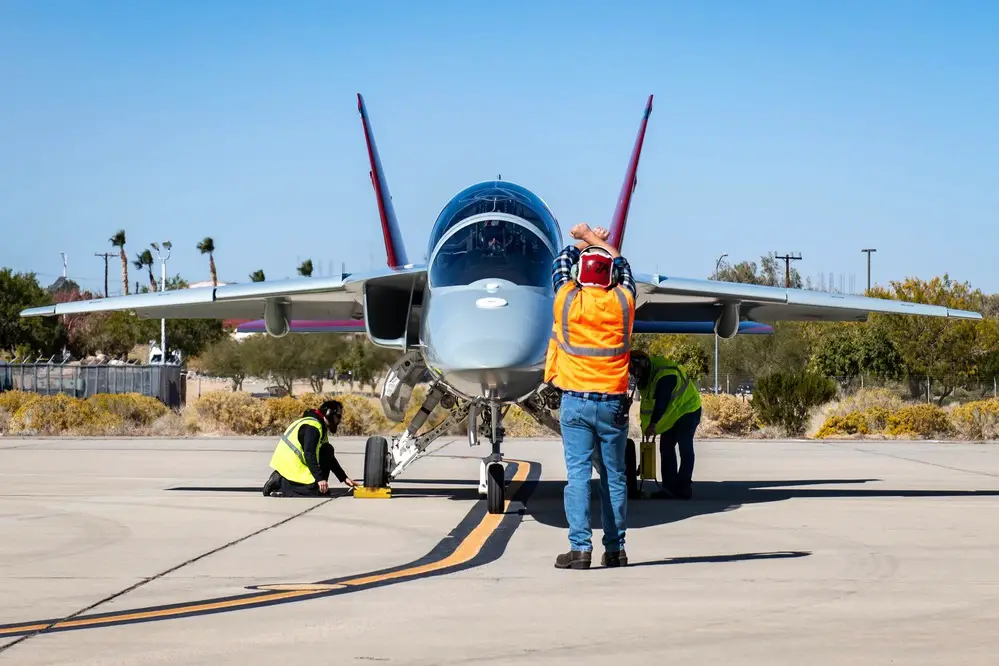The U.S. Air Force’s new bird of prey, the T-7 Red Hawk, arrived at Eglin Dec. 15, 2023 to begin a series of climate testing at Eglin’s McKinley Climatic Lab. The purpose of the testing is to verify the T-7A’s system functionality while operating in extreme environmental conditions. Among others, those conditions consist of minus 25 degrees Fahrenheit and up to 110 degrees sustained temperatures. The climatic chamber testing will evaluate the aircraft system’s performance including propulsion, hydraulic, fuel, electrical, secondary power, environmental control, and overall operations.

“The Red Hawk must withstand a range of environments from sitting on the ground in the Texas heat to flying at altitude. The climatic lab helps us do this in a deliberate and methodical way and will give us confidence that our new aircraft meets requirements. The Red Hawk now joins many other Air Force aircraft tested at McKinley, from World War II to today’s 21st century planes, to ensure they will operate in real world conditions,” said Dr. Troy C. Hoeger, Air Force Life Cycle Management Center’s T-7A chief developmental tester.

The relatively new T-7A only arrived at Edwards AFB, California for testing in November. It is set to be the replacement aircraft to T-38C fleet. The T-7 Red Hawk will drastically improve training for the next generation of fighter and bomber pilots and will better prepare student pilots to advance into fourth and fifth generation fighter and bomber aircraft. With advanced mission systems, a glass touchscreen cockpit, stadium seating, and embedded training capability the T-7A Redhawk will make a fundamental difference in future pilot training.

The Boeing–Saab T-7 Red Hawk, initially known as the Boeing T-X (later Boeing–Saab T-X), is an American/Swedish supersonic advanced jet trainer produced by Boeing with Saab. The T-7’s design allows for future missions to be added, such as the aggressor and light attack/fighter roles. In the training environment, it has been specifically designed for high-G and high angle-of-attack maneuvers and night operations, with an emphasis on being easily maintained. The aircraft is equipped with a single GE F404 turbofan engine, but produces three times the total thrust as the twinjet T-38.















